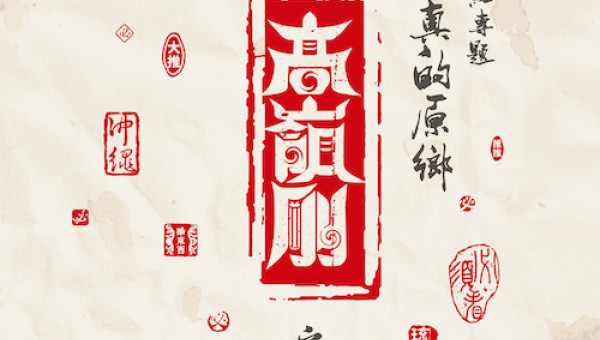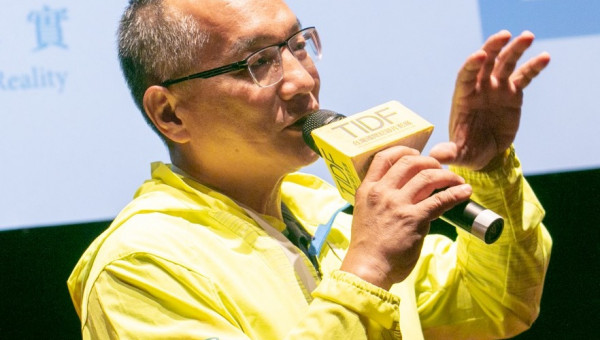LANDSCAPE OF THE TIMES: REALITIES OF MYANMAR
I recall vividly the many days and nights we spent wrestling with coming up with the focus programme for the 2024 Taiwan International Documentary Festival (TIDF). Despite a variety of themes and issues of great interest to countries, programmes, as well as filmmakers, my team and I struggled long and hard with making the final call.
Coincidentally, it was also during those days of planning that I had a chance to see Midi Z's The Clinic (2023), which impressed and inspired me profoundly. The film centers around a clinic based in Yangon, Myanmar, where people struggling with chronic insomnia, hallucinations, and alcoholism come to seek medical help. The couple running the clinic are not just doctors but also artists. They prescribe medicine and administer vaccines, and use art to help patients release what has been repressed within them. A meta-cinematic work spanning multiple years of filming, viewers are introduced to a reality that mirrors a film within a film, examining as well as reconciling the pain, suffering, and chaos that followed the 2021 military coup, faced by the people of Myanmar.
Born in Myanmar, Midi Z came to study in Taiwan in 1998 at the age of 16 before settling down here and establishing himself as a prominent director. Sharing a similar background, filmmakers like Midi Z, LEE Yongchao, and Myo Aung serve as uniquely important bridges between Taiwanese and Myanmar cinema with a continuous output of movies shot in their hometown, inspiring TIDF and our focus programme in truly extraordinary ways.
To dive more deeply into Myanmar cinema, our programmer CHUNG Peihua and I traveled to Yangon in November 2023 for extensive field research to learn more about the filmmakers and their works, as well as the larger cultural and temporal contexts under which the films have been made possible.
Film Festivals, Institutes, and Communities
Founded in 2011, the Wathann Film Festival–with a poetic reference to 'rain' in Burmese–was the first ever and most prominent film festival in Myanmar dedicated to local independent films. Despite coming to an end in 2020, the festival has had a profound impact on the growth and development of professional cinematic communities in Myanmar throughout the past decade.
We were joined by Thu Thu Shein and Thaiddhi, co-founders and programmers of the Wathann Film Festival, on our nostalgic visit to the Waziya Cinema Yangon, a historical site in the city center that served as the venue for the festival. We wandered through the now run-down building, reminiscing about the days tidying up, organising, and setting up the venue for the last festival that, to everyone's surprise, was graced by almost 300 people. 'This is where we hosted the opening party,' said Thu Thu Shein and Thaiddhi as they walked toward the terrace.
Today, the collection of brochures from each year's event is an invaluable archive of Myanmar independent films, while Thu Thu Shein and Thaiddi have turned to fostering future talent and creating new works such as Ten Years Myanmar (2023), continuing to explore and unlock new possibilities for Myanmar cinema.
One example is the Yangon Film School (YFS). Founded in 2005, the YFS is dedicated to training filmmakers in Myanmar by offering a 3-year intensive course programme free of charge. As of today, the YFS has trained over 250 students, making it the most prominent training institute for Myanmar filmmakers. In the immediate aftermath of Cyclone Nargis in 2008, a group of YFS students ventured into the affected areas to document the scenes, eventually releasing Nargis - When Time Stopped Breathing (2009) anonymously. The Maw Naing and Pe Maung Same, directors of the film, kept their identities undisclosed out of safety concerns until 2012. In addition, Sai Naw Kham continued to expand his short film from his time at the YFS by shedding light on the local traditional artists in the Shan State, tackling the issue of national and ethnic traumas via Song of Souls (2023).
Other examples include the 3-ACT Cinema Magazine founded by Moe Myat May Zarchi and Aung Phoe, which, together with international workshops and events, aims to encourage and inspire innovative experimental filmmaking in Myanmar. There's also production companies such as Only One But Rat and Tagu Films, media organisations like the Democratic Voice of Burma, as well as the Save Myanmar Film project founded by Okkar Maung to preserve local films. These collaborative efforts help to overcome limitations and shortages of resources, supporting and empowering a growing community dedicated to the diversity of independent films in Myanmar.
Complex realities told through cinematic metaphors
Political instability has long plagued Myanmar, including protracted civil wars and the military coup in 2021, and soldiers and armed groups have been a constant presence on the streets of Yangon. But while strict censorship and a tight government grip on public assemblies pose a real challenge to filmmaking in Myanmar, documentaries play an ever more important role not only as a voice of dissent but also a witness to the era. Examples include the Myanmar Diaries (2022) by The Myanmar Film Collective, Losing Ground (2023) by the Anonymous LG Team, as well as Comrade Poopy (2023) and Comradeship (roughcut) (2023) by filmmakers-in-exile and members on the front line.
There's also Again and Again (2005) by The Maw Naing, Hands Around in Yangon (2012) by Moe Satt, Once Upon a Time There Was a Mom (2023) by Lin Htet Aung – experimental short films that span across different periods in Myanmar, acting as fables of national fate and cyclicity. These are works of fiction, of obscurity, of anonymity, and also of bluntness. Multilayered, subtle, and metaphorical, these independent films tell the stories of Myanmar that are the hardest to tell.
Seen from a larger and broader perspective, the 26 films to be screened at TIDF share a common fundamental theme: to express in a cinematic way both outer realities and inner sentiments, and to truthfully reflect the times. Truth, therefore, is both fleeting and enduring. It is both a response to and a metaphor of the times.
In The Clinic (2023), the protagonist is played by Aung Min, a doctor and director whose own work, The Clinic (2010) is his first ever short documentary. 'When I am making a diagnosis, I am also thinking about what else I can do,' said Aung Min himself in the documentary. Fast forward to more than a decade later, Aung Min and his film group TEN MEN are still as involved in filmmaking as day one.
While Myanmar cinema has been around for more than a hundred years, independent films in the country only emerged over 20 years ago[1] and still remain to be defined. Just as pressures and limitations exist within the current political context, so do possibilities and opportunities abound. We sincerely welcome you to the Focus Programme for TIDF 2024 – Metaphor of the Times: The Reality Named Myanmar, where an attempt is made at mapping out the cinematic landscape of Myanmar independent films and generating more dialogues and conversations.
[1] According to Asian cinema researcher and programmer Philip CHEAH, the advocacy work on motion picture education in Myanmar in 2003 by Japanese independent curator SEI Keiko was instrumental in the launch of a scholarship program by the Film and Television School of the Academy of Performing Arts in Prague (FAMU). In addition, low-cost digital images have become more common since 2004, making filmmaking and screening easier and ushering in a new era of vibrant cinematic development in Myanmar in terms of film varieties, festivals, and professional institutes. Therefore, the years 2003 and 2004 can be viewed as the beginning of Myanmar independent filmmaking. Source: pp. 20-23, “Burma Film History Chronology,” Showcase Cinema – Myanmar Showcase: 100 Years of Myanmarese Film (2020) by Herman Van EYKEN and Phillip CHEAH.
Translated by Joey CHAO


